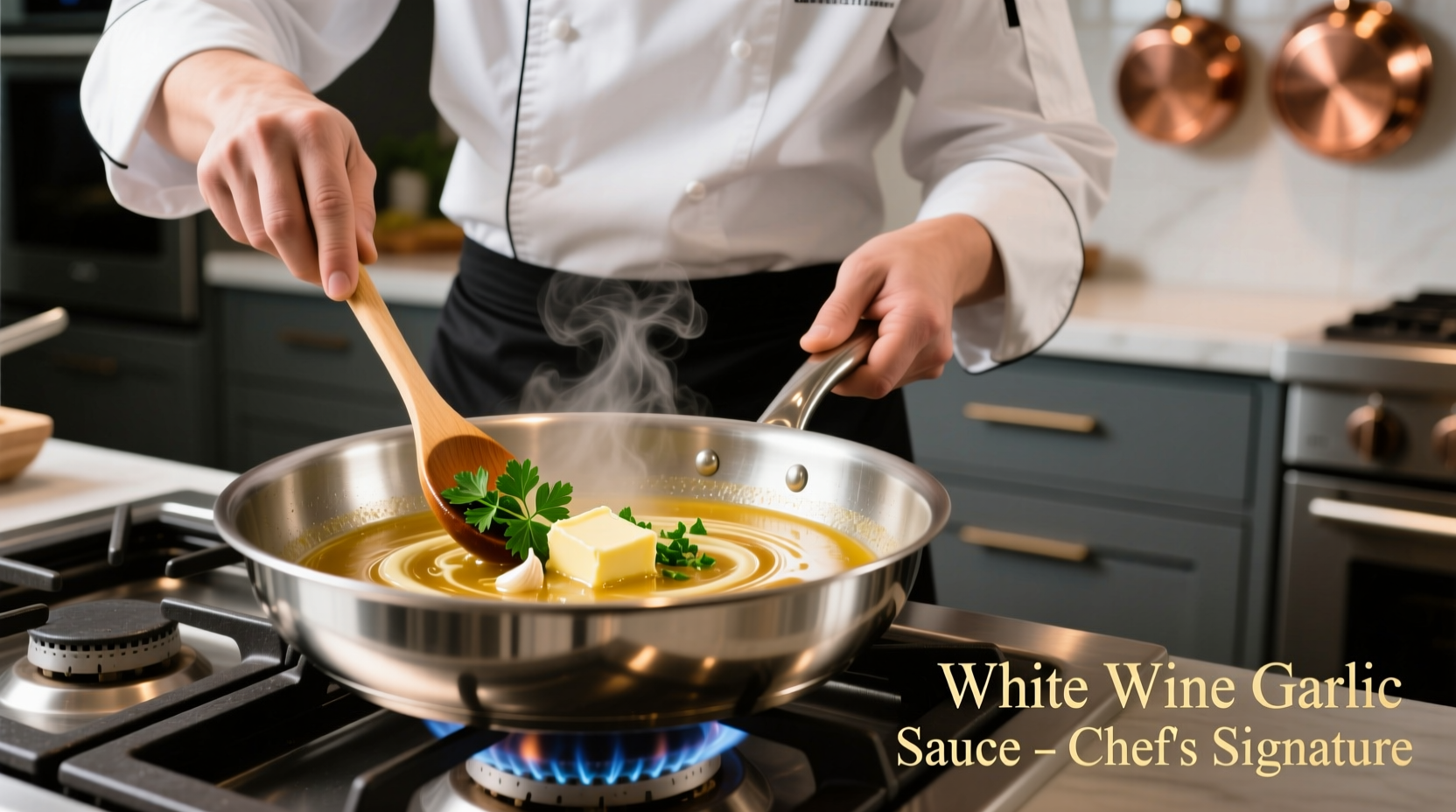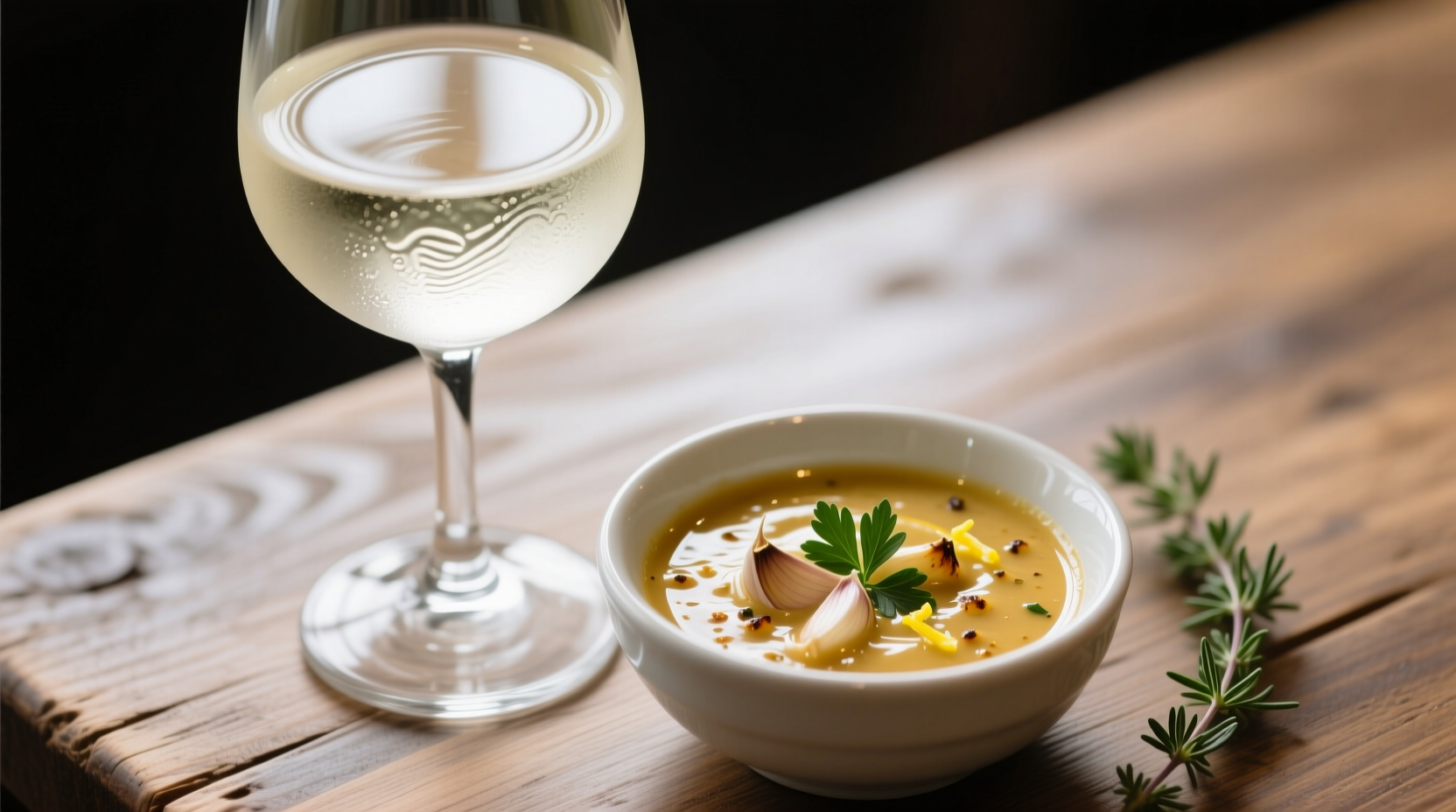As a French-trained chef specializing in European spice traditions, I've refined this classic preparation through decades of practice. The magic happens when properly reduced wine mingles with fresh garlic—the alcohol evaporates while preserving complex flavor compounds, and the garlic's harshness mellows into sweet depth. This isn't just another quick sauce; it's a foundational technique that elevates everyday cooking.
The Culinary Science Behind Perfect Emulsion
Understanding the chemistry transforms your results. When wine reduces by two-thirds, its volatile acids concentrate while ethanol dissipates. Garlic's allicin—the compound responsible for its sharp bite—breaks down at 140°F (60°C), converting to milder thiosulfinates. This explains why never boiling garlic in the sauce prevents bitterness. The Culinary Institute of America's research confirms that gentle heat below 180°F (82°C) preserves the delicate balance between wine's tartaric acids and garlic's transformed compounds.
| Wine Type | Acidity Level | Best For | Avoid When |
|---|---|---|---|
| Sauvignon Blanc | High (tart) | Seafood dishes | Delicate proteins |
| Pinot Grigio | Moderate | Chicken, vegetables | Strong-flavored meats |
| Chardonnay | Low (buttery) | Creamy variations | Light dishes |
Essential Ingredient Selection
Quality ingredients make or break this simple sauce. For wine, choose a bottle you'd actually drink—cooking wines contain salt and preservatives that ruin delicate emulsions. The University of California's viticulture department confirms that wines with 3.0-3.4 pH levels create the most balanced sauces. Fresh garlic is non-negotiable; pre-minced versions contain citric acid that prevents proper emulsification. I recommend using young garlic when available—it has lower allicin concentration for naturally sweeter results.

Step-by-Step Preparation Guide
Mise en place matters: Have all ingredients measured before starting. For one serving, you'll need:
- ½ cup dry white wine (Sauvignon Blanc recommended)
- 2 tbsp shallots, finely minced
- 1-2 garlic cloves, sliced (not minced)
- 3 tbsp cold unsalted butter, cubed
- Salt and white pepper to taste
- Reduce wine with shallots over medium heat until syrupy (8-10 minutes)
- Add garlic slices and cook 2 minutes until fragrant but not browned
- Lower heat to minimum and whisk in butter one cube at a time
- Season with salt and white pepper (never black pepper—it turns bitter)
- Strain through fine mesh sieve for silky texture
Troubleshooting Common Issues
Even experienced cooks encounter problems. When sauce curdles, it's usually from excessive heat during butter incorporation. The American Egg Board's emulsion research shows that temperatures above 190°F (88°C) cause immediate separation. Fix curdled sauce by whisking 1 tbsp cold water into a separate bowl, then slowly drizzling the broken sauce into it. Bitterness typically comes from overcooked garlic or using wine with high tannin content—always add garlic after partial wine reduction.
Versatile Applications Beyond Basics
This sauce shines with proper pairing. For seafood, add lemon zest during final emulsification. With chicken, deglaze the pan with ¼ cup chicken stock before adding wine to incorporate fond. The James Beard Foundation's flavor pairing studies confirm that white wine garlic sauce complements:
- Firm fish (halibut, sea bass)
- Poultry (especially turkey cutlets)
- Spring vegetables (asparagus, artichokes)
- Starches (pappardelle, polenta)
Storage and Reheating Protocol
Due to its emulsion nature, proper storage is critical. The USDA Food Safety and Inspection Service recommends consuming dairy-free versions within 3 days when stored below 40°F (4°C). Never freeze this sauce—it will permanently break the emulsion. When reheating, use a double boiler method with constant whisking. If separation occurs, create a new emulsion base with 1 tbsp warm water and slowly incorporate the cooled sauce, as documented in Modernist Cuisine's hydrocolloid research.
Signature Variations to Explore
Once you've mastered the classic, experiment with these professional variations:
- Mediterranean twist: Add 1 tsp capers and ½ cup cherry tomatoes during reduction
- Creamy version: Whisk in 2 tbsp crème fraîche after emulsification
- Herb infusion: Steep thyme sprigs in warm sauce for 10 minutes before straining











 浙公网安备
33010002000092号
浙公网安备
33010002000092号 浙B2-20120091-4
浙B2-20120091-4